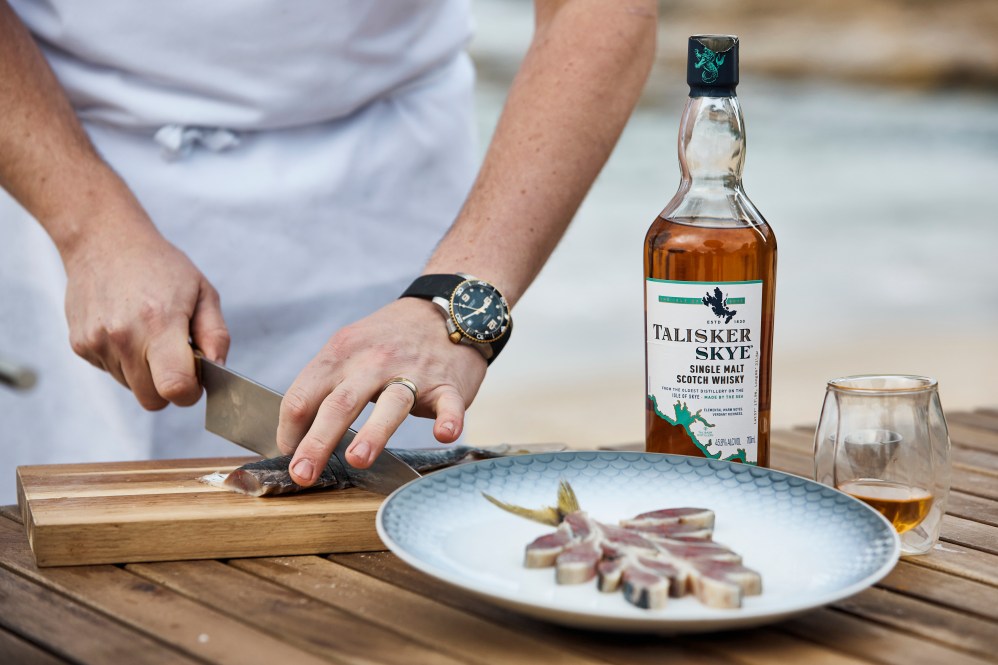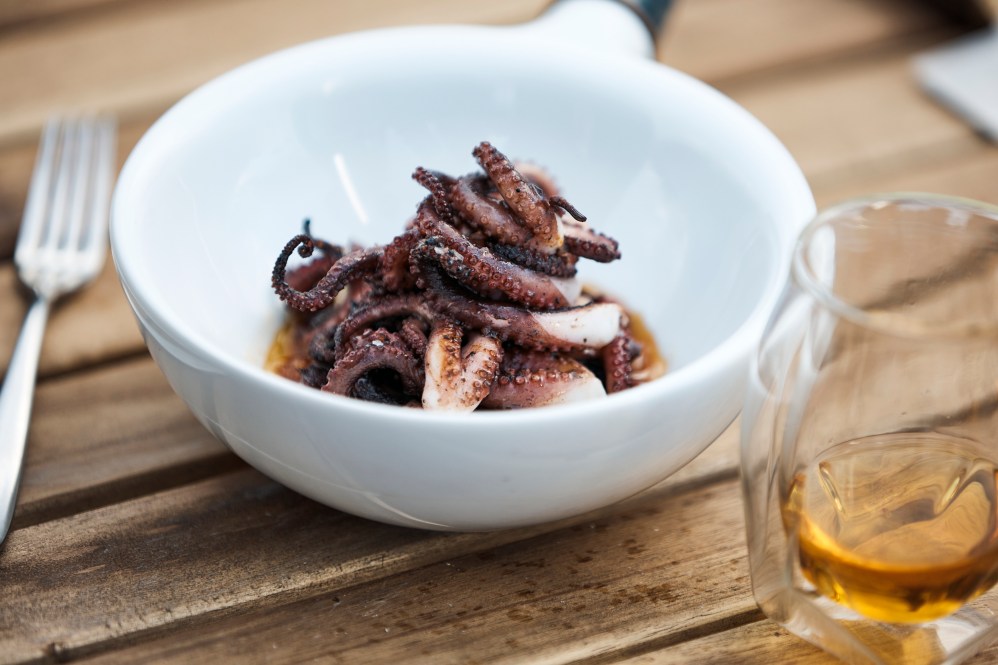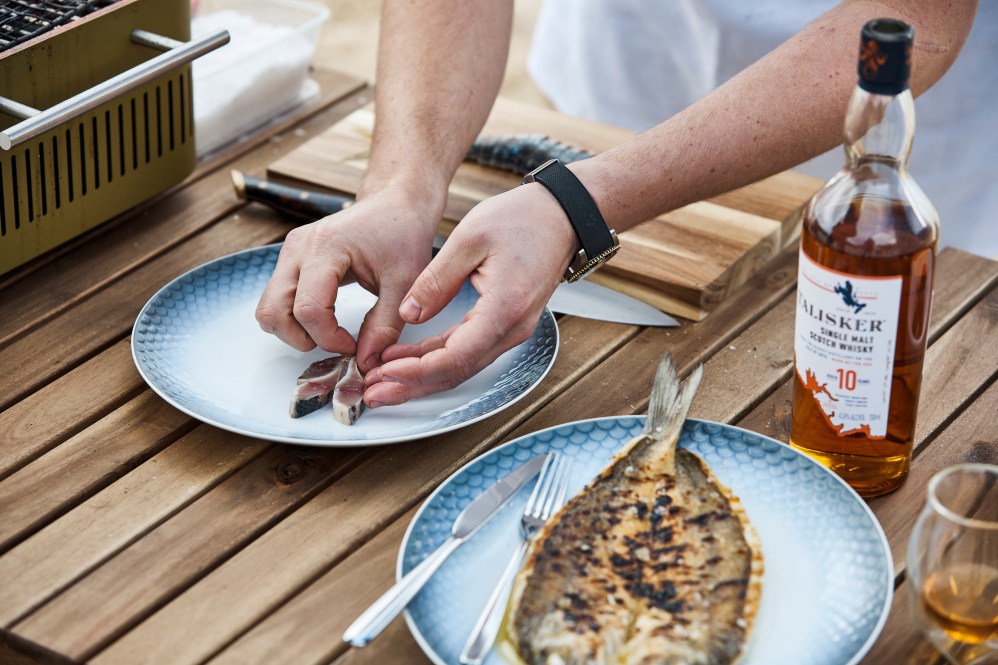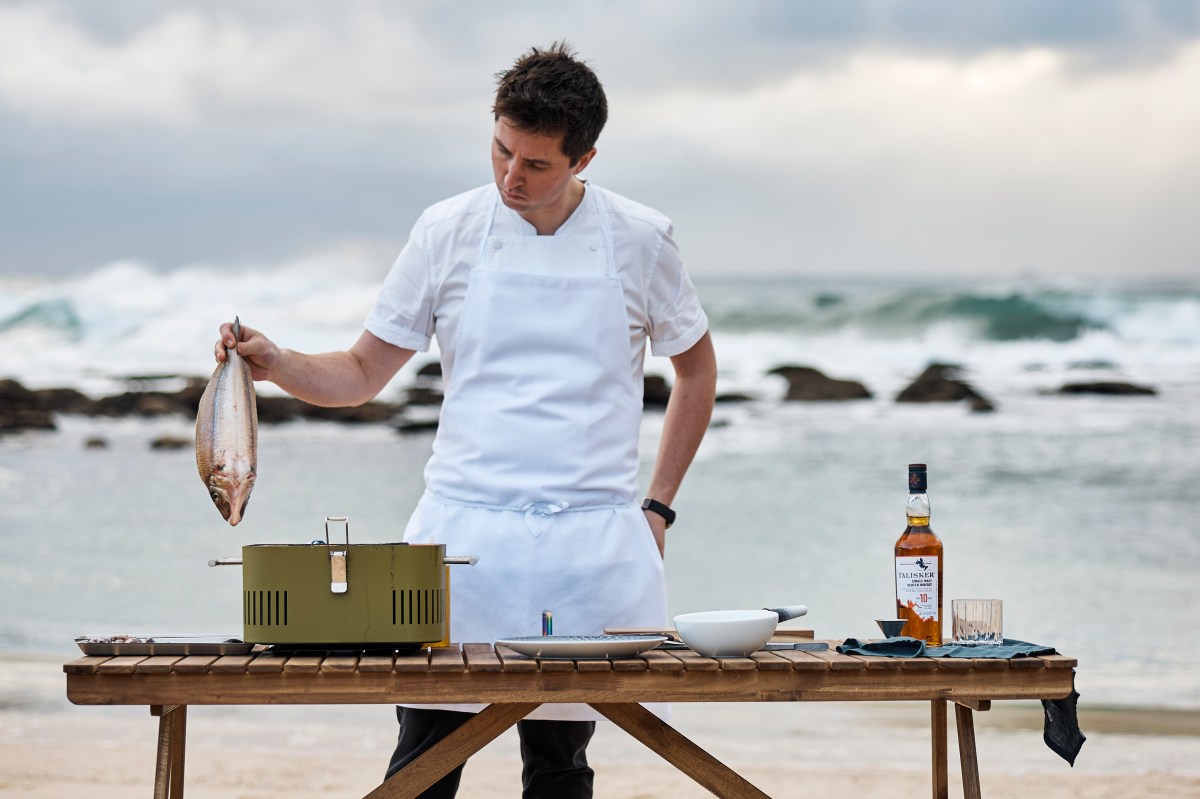The realms of food and drink are intrinsically linked, constantly merging with each other throughout almost every meal. Think beer and wings, Champagne and oysters or Shiraz and steak.
Whisky and seafood may not be a match on paper, but the idea presented a welcome challenge for Sydney chef Josh Niland. Throw in the creation of a bespoke pop-up restaurant overlooking the clifftops in North Head and you have Talisker’s Boathouse.
Niland speaks to Hospitality about creating a three-course menu that drew inspiration from whisky notes, aligning with a global brand and why the dots join up a little bit better cooking by the sea.
Josh Niland’s 18-seat restaurant Saint Peter is nothing short of experiential. The Paddington staple has been a gamechanger for Sydney fine dining since its launch, with the fish-centric concept going on to spawn Fish Butchery and Charcoal Fish. It’s safe to say Niland has changed the way the public views and consumes seafood — specifically, fish.

But like most people who spend years honing their craft, it’s easy to fall into a rhythm, which made Talisker’s Boathouse all the more interesting to the chef.
“Although the rhythm involves Saint Peter, Fish Butchery and Charcoal Fish — and we do change the menus frequently — we don’t necessarily work within tight parameters,” says Niland. “From a creative point of view, it’s fascinating to think of whisky being paired with fish. I think it’s quite difficult, and the difficulty was the appeal.”
The three-course menu was largely influenced by what would go hand in hand with the flavour profiles of 10-Year-Old, Storm and Skye. “I was interested in all three whiskies because they are all super different; looking at the tasting notes was a big part of it,” says Niland. “Our food does start to blur the lines between fish and meat, and we are able to bring out the savoury flavours in fish, so it was about looking at what dishes were complementary to those notes.”
Sea salt, pepper, spice and smoke abound in the 10-Year-Old. The double-distilled whisky is aged for a decade in American oak casks — it also happens to be Niland’s favourite of the three. “When something is 10 years old, you feel a responsibility not to cock it up,” he laughs. “Anything with a bit of time on it appeals to me, so we did a salt and vinegar blue mackerel. It carries more salinity and minerality, which is consistent with the whisky.”

The chef compares the fish to “a big anchovy — almost”, with the additions of salt and vinegar generating the palate for what’s to come. The dish was inspired by anchovies on toast and served with kamut sourdough and yoghurt cultured butter, with diners encouraged to get stuck in with their hands — tear off a piece of bread, swipe it with butter and top it with fish. “The butter helped with the oily quality of the whisky,” says Niland. “Without the butter and the acidity, it can warm you up a bit too much.”
Course two saw Cornet Inlet squid paired with ’nduja made with yellowfin tuna. It’s a classic Saint Peter dish reworked with a thwack of heat and fat to go with Storm, which is heavy on the wood, brine and smoke. “Storm was one of the more challenging ones because of how robust it is,” says Niland. “But to have consistencies around how we prepared the calamari over the grill was a nice link to the smokiness.”
The chef says the ’nduja was the most important part of the Bolognese-ish dish that joined the elements on the plate together, describing chilli and whisky as the best of friends. “The fruitiness of the spices in the ’nduja allow some of the nuances of the whisky to come through, while the calamari is the textural vehicle that carries the ’nduja,” says Niland. “We added more oil to fatten it up and increased the spice.”

Niland’s final dish was served with Skye — a namesake, grassy ode that pays homage to the Cuillin rocky mountains via notes of citrus, sweet smoke and peppery spice. King George whiting is pigeonholed as a lighter fish oft sat next to lemon, but Niland says it can tolerate aromatics and some time over a high-heat grill.
It’s a welcome contrast against the unctuous (in a good way) sauce, which combined a spoon of bergamot purée with tapioca and finger lime “for that burst and tightness of acidity”, says the chef.
“The tapioca carries the flavours of the sauce and the whisky once you finish eating. It’s a wonderful conduit to grab flavours and let them continue lingering. The tapioca and fat side by side was a nice pairing to go with the whiting, which has a glassy golden skin. When your teeth go through the bubbly blisters on the skin, there is smoke in all the pockets. I thought it was heaven.”

Taking the team out of the kitchen to North Head was also a sweetener to the partnership between Talisker and Saint Peter. “I haven’t cooked Saint Peter’s food somewhere else, and I really haven’t done this very much,” says Niland on the partnership.
“It’s always interesting when a large brand comes along and wants to do something substantial. It’s a really nice opportunity for us to use the other halves of our brains to do something quite interesting.”
Encouraging guests to contemplate the pairings was a bonus for Niland, who says the more people he can cook for, the better. “It’s why I do what I do — I enjoy feeding people and the generosity of the work we do,” he says.
“I hope people see what we’ve done and can throw that hat on and understand the details in the food and the whisky, which are the heroes.” While the pop-up dinner was a one-night-only event, it wasn’t the end for the three-course menu, which is available at Saint Peter for a limited time. Can confirm it’s well worth the visit.

